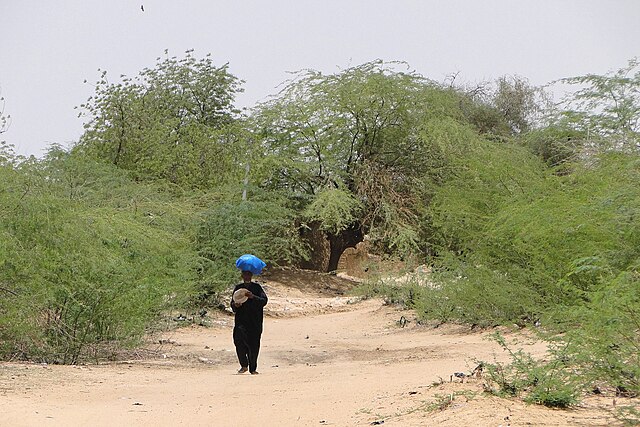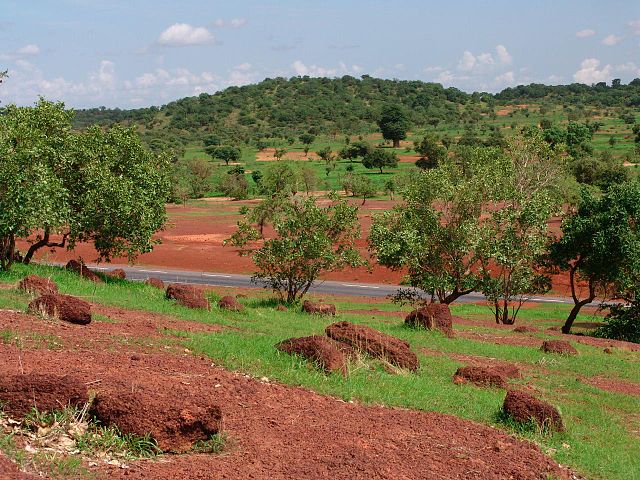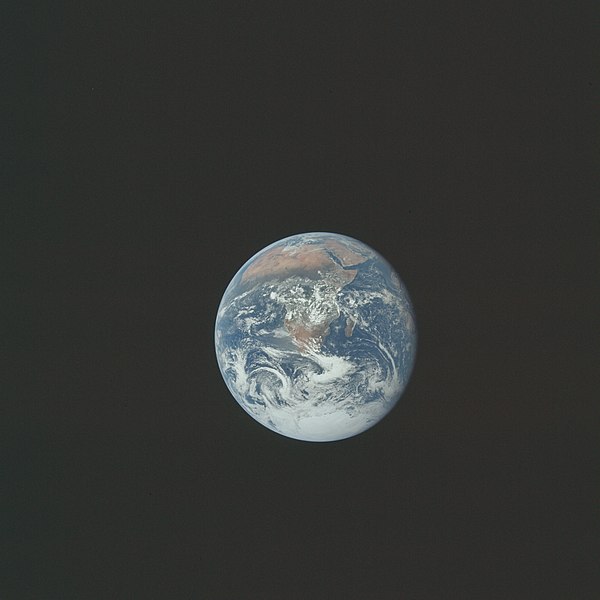The Sahel region or Sahelian acacia savanna is a biogeographical region in Africa. It is the transition zone between the more humid Sudanian savannas to its south and the drier Sahara to the north. The Sahel has a hot semi-arid climate and stretches across the southernmost latitudes of North Africa between the Atlantic Ocean and the Red Sea. Although geographically located in the tropics, the Sahel does not have a tropical climate.
Image: Mud Mosque Bani Sahel Region Burkina Faso 02
Image: Sahel Scene Dori Sahel Region Burkina Faso
The lush green of the Sahelian acacia savanna during the rainy summer season in Mali. Note the large baobab amongst the acacia.
Herders with livestock and azawakh dogs in the Sahel
Africa is the world's second largest and second-most populous continent after Asia. At about 30.3 million km2 including adjacent islands, it covers 20% of Earth's land area and 6% of its total surface area. With 1.4 billion people as of 2021, it accounts for about 18% of the world's human population. Africa's population is the youngest amongst all the continents; the median age in 2012 was 19.7, when the worldwide median age was 30.4. Despite a wide range of natural resources, Africa is the least wealthy continent per capita and second-least wealthy by total wealth, ahead of Oceania. Scholars have attributed this to different factors including geography, climate, tribalism, colonialism, the Cold War, neocolonialism, lack of democracy, and corruption. Despite this low concentration of wealth, recent economic expansion and the large and young population make Africa an important economic market in the broader global context.
The totality of Africa seen by the Apollo 17 crew
Lucy, an Australopithecus afarensis skeleton discovered in 1974 in the Awash Valley of Ethiopia's Afar Triangle
Saharan rock art in the Fezzan, Libya
Colossal statues of Ramesses II at Abu Simbel, Egypt, date from around 1250 BC.








